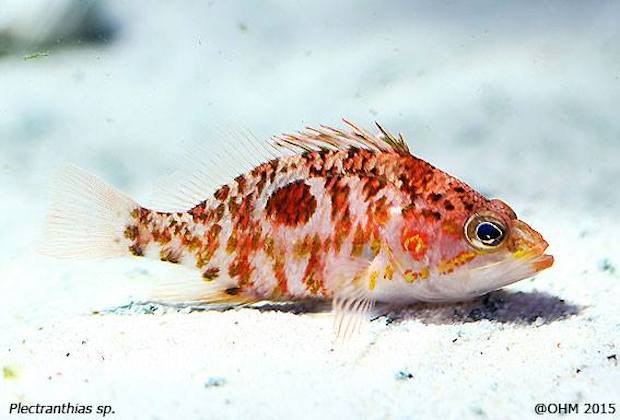If there’s a genus we love more than or equal to Liopropoma here at Reef Builders, it’s got to be Plectranthias. Unfortunately, Plectranthias is poorly reviewed and the genus is riddled with numerous undescribed members which leads to confusion in identifying various species. To make matters worse, it is not uncommon for certain unknown species to look similar to known ones, or even unknown ones looking similar to other unknown ones. Such confusion is rampant and is a great cause for headaches.

Plectranthias is distributed aggressively in all major oceans in the Pacific, Indian as well as the Atlantic. The genus attains maximum development in the Pacific where a majority of the species are found. A large handful of known unknowns are documented and are awaiting description, but it is with certainty that even more remain to be discovered. Their highly cryptic and coy behaviour protects them from observation and capture. Many of them are also adept at living in deepwater, which makes documentation even more obscure.
In Japan alone, at least four or more undescribed species can be found. One of them, pictured here, can be found outside of Japan as well with a big range encompassing Indonesia and the Philippines as well. It can also be found in Papua New Guinea and Palau, where it is abundant below 300ft. Because there are so many undescribed species without names, allocating even a common name for this or even a temporary number is difficult.

This particular undescribed species is a known unknown, and is quite frequently photographed in Japan. This species is best characterised by its network of rust coloured hieroglyphic markings, which includes a variably sized spot on the body. Dorsal spines 1-4 are coloured prominently in white, with the rest being clear. The large spot pattern on its body is unique to this and only one other species**, for which it is also undescribed and sometimes confused with.

This species is rare in the trade, but very uncommonly makes its appearance randomly and unexpectedly. It can be found in Indonesia, and Luiz Rocha reports this to be common in the Philippines as well. The single specimen headlining this post showed up in Bangkok, Thailand, and was photographed by Ohm Pavaphon.
Take note that in that specimen, the spot on the body is very large and prominently distinct from the other markings on the body. According to the shop where the fish came from, it was exported out of Irian Jaya, but exactly where we are unsure.

**As mentioned before the former undescribed species shares the spot characteristic with one other member. The “Hinomaru” Plectranthias from Japan is also currently undescribed, and shared the same characteristic of having a large red circular blotch on its body. However this species is more consistent in its marking, and the circle is always roughly the same size in varying examples.
The name “Hinomaru” comes from the red circle in the Japanese flag, which gives this species its name. Unlike the former, the “Hinomaru” Plectranthias lacks the rust coloured markings, but instead, have a series of striae that are composed of gold scaling edged in orange. The dorsal spines are also entirely clear and are not marginally edged in white. The Bishop Museum drew similarities between both undescribed members, so it is with hope that they eventually get a name soon.



